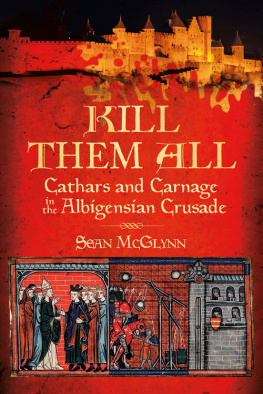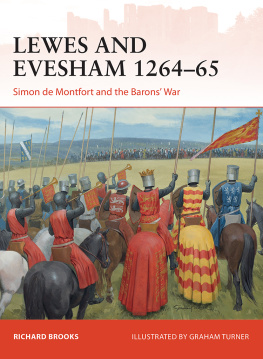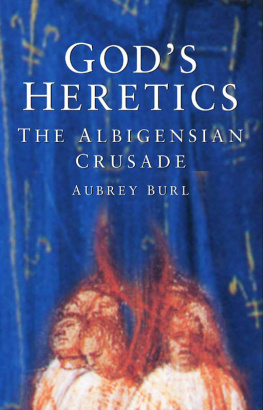Crusaders and Revolutionaries of the Thirteenth Century: De Montfort
For Rosana and Russell, heirs to the de Montfort tradition
Crusaders and Revolutionaries of the Thirteenth Century: De Montfort
Darren Baker
First published in Great Britain in 2020 by
Pen & Sword Military
An imprint of
Pen & Sword Books Ltd
Yorkshire Philadelphia
Copyright Darren Baker 2020
ISBN 978 1 52674 549 1
ePUB ISBN 978 1 52674 550 7
Mobi ISBN 978 1 52674 551 4
The right of Darren Baker to be identified as Author of this work has been asserted by him in accordance with the Copyright, Designs and Patents Act 1988.
A CIP catalogue record for this book is available from the British Library.
All rights reserved. No part of this book may be reproduced or transmitted in any form or by any means, electronic or mechanical including photocopying, recording or by any information storage and retrieval system, without permission from the Publisher in writing.
Pen & Sword Books Limited incorporates the imprints of Atlas, Archaeology, Aviation, Discovery, Family History, Fiction, History, Maritime, Military, Military Classics, Politics, Select, Transport, True Crime, Air World, Frontline Publishing, Leo Cooper, Remember When, Seaforth Publishing, The Praetorian Press, Wharncliffe Local History, Wharncliffe Transport, Wharncliffe True Crime and White Owl.
For a complete list of Pen & Sword titles please contact
PEN & SWORD BOOKS LIMITED
47 Church Street, Barnsley, South Yorkshire, S70 2AS, England
E-mail:
Website: www.pen-and-sword.co.uk
Or
PEN AND SWORD BOOKS
1950 Lawrence Rd, Havertown, PA 19083, USA
E-mail:
Website: www.penandswordbooks.com
Preface
T he de Montforts started out as foresters in an area just west of Paris. By the beginning of the twelfth century, they were an established baronial family on the Norman frontier, key players in the struggle between the kings of England and France. A hundred years later they were renowned crusaders, fighting for Christendom while carving out new principalities for themselves in the process. During the course of the thirteenth century, they acquired lordships from Wales to Italy to the Holy Land, built in large part on their military skills, religious zeal, and overweening ambition and opportunism. But then, like that, it was over. As the century came to a close, there was nothing left of the fortune and power they had accumulated. Their influence with kings, popes, emperors and sultans was gone, their place among the noble houses of Europe had vanished.
The fame and notoriety of the family nevertheless endured because of the historic Simon de Montforts, father and son, two of the earliest proponents of constitutional government in medieval Europe. Both men were crusaders and revolutionaries (the latter in the sense of their attempts to overturn the existing order) but their careers and fates stood in stark contrast to each other. The father undertook a religious crusade with political overtones, the son a political crusade with religious overtones. The father went after heretics, the son foreigners. Where senior was ultimately thwarted by the unwilling population he had conquered, junior enjoyed widespread support from the middling folk and peasants. He had mostly himself to blame for his downfall. Each man having died for his cause, senior was borne away and given an honourable burial. His son was frightfully chopped up into trophies on the battlefield, his name soon synonymous with disorder and outlawry. And yet the younger Simon is the one celebrated today, for the principles of democracy he supposedly espoused. His father, who was very much admired in his own day, is condemned as a fanatic out to destroy a whole people and culture.
What both men had in common were exceptional wives and devoted children who, in many ways, were equally capable and controversial. The cousins too were forces to be reckoned with, but there has never been a single volume that treated the lot of them, let alone together with these two commanding figures, who themselves have never shared the same pages. So when one day I was asked what historical book I would like to write next, my answer was instantaneous. It was no sooner agreed, however, than I began to wonder what lay in store for me. The biggest challenge was starting with a clean slate, which is to say basing this biography on source material and not on the work, and opinions, of the historians who preceded me. Fortunately many fine translations of thirteenth-century chronicles and texts have become available in recent years, especially in the case of the Albigensian Crusade. The other problem with bringing this extended family to a wider audience is the repetition of names that occur through the generations. There are eight Simons and nine Amaurys alone from beginning to end. Although the story about to unfold is ordered in a strictly chronological fashion, the assorted de Montforts, even those who make the briefest of appearances, have been given numeric suffixes. It may be an eyesore to some readers, but the alternative for those who lose the thread will be total confusion.
The family, friends and associates mentioned in my previous work on the de Montforts have my thanks and gratitude here as well. Two I would like to add are Danna Messer, who asked the question that became the book, and Laura Hirst, who took care of the production side of it during an extraordinarily difficult time. This spring of 2020 saw the coronavirus pandemic bring the world to a virtual standstill, but Laura patiently and skillfully made sure everything stayed on schedule and in the quality that this remarkable medieval family deserves.
Timeline
| 1000 | Indicative year of the birth of Amaury I, the first lord of Montfort |
| 1087 | Death of Simon I, lord of Montfort, succeeded by his son Amaury II |
| 1089 | Death of Amaury II, succeeded by his brother Richard, who is succeeded by their brother Simon II as the lord of Montfort |
| 1093 | Marriage of Bertrade de Montfort to King Philip I of France |
| 1104 | Death of Simon II, succeeded by his brother Amaury III |
| 1117 | Death of Bertrade, she is buried at Hautes-Bruyres |
| 1119 | Amaury III becomes the count of Evreux and lord of Montfort |
| 1129 | Bertrades son Fulk V of Anjou becomes the king of Jerusalem |
| 1137 | Death of Amaury III, succeeded by his son Amaury IV |
| 1140 | Death of Amaury IV, succeeded by his brother Simon III |
| 1170 | Marriages of the children of Simon III in and around this year: Amaury V to Mabel, daughter of the 2nd earl of Gloucester; Simon IV to Amicia, daughter of the 3rd earl of Leicester; Bertrade to the 5th earl of Chester |
| 1171 | Probable birth year of Simon V, his brother Guy I born sometime later |



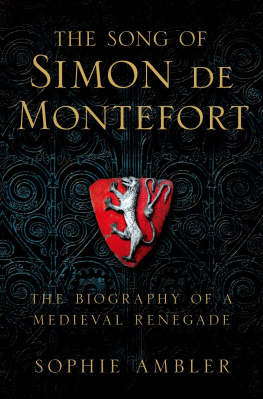
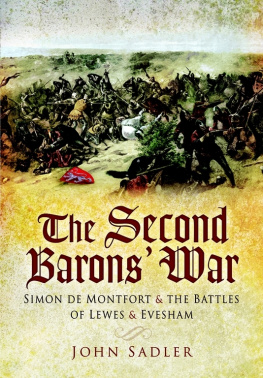
![Louis de Montfort - The Saint Louis de Montfort Collection [7 Books]](/uploads/posts/book/265822/thumbs/louis-de-montfort-the-saint-louis-de-montfort.jpg)

